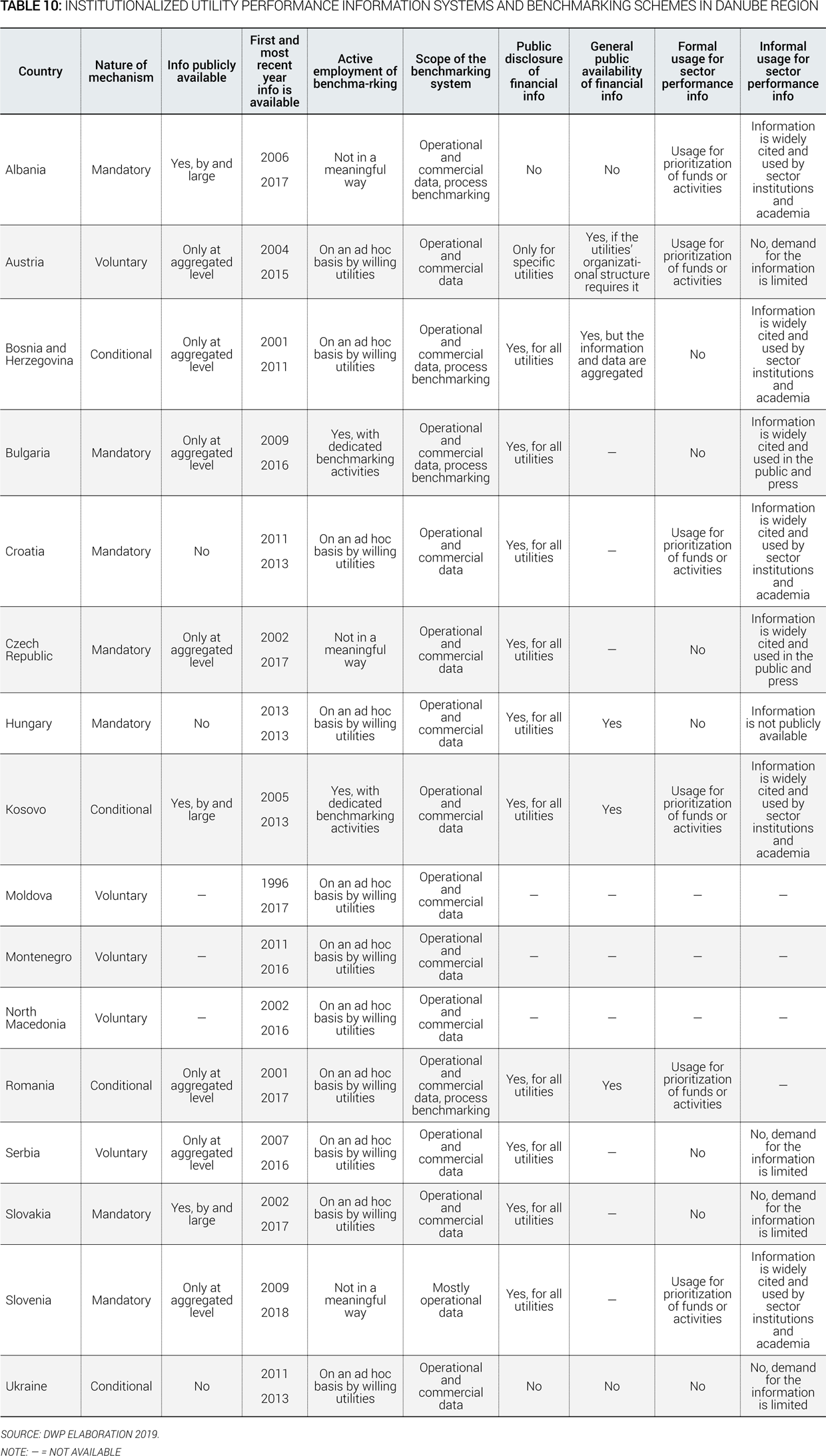E. Sector Monitoring and Benchmarking
42. Half of the countries of the region set up a system to monitor performance of service providers or benchmarking processes for their water utilities around a decade ago (Table 10). Eight countries display data and information on their WSS sector available for 10 years or more, thus allowing following the medium-term evolution of utilities’ performance. However, in two-thirds of the countries with benchmarking, its employment is limited to an ad hoc use by willing utilities. Therefore, it is a tool to generate knowledge on internal processes and improve or turn around utility performance without any national monitoring. Moreover, about one-quarter of those countries do not seem to be using the data and information coming out of their benchmarking system. (See Figure 17, panels a and b.) Nevertheless, important developments are the creation of the Danube Utility Benchmarking and Information Sharing website,17 which provides a platform for knowledge exchange and regional benchmarking (see box 4). In addition, the International Association of Water Service Companies in the Danube River Catchment Area (IAWD) has started, under the Danube Learning Partnership, a highly successful utility benchmarking program for WSS.18
43. Most benchmarking systems are making operational and commercial information collected publicly available predominantly at aggregated level. But for about one-quarter of those systems, the operational and commercial data gathered are not displayed publicly. Nevertheless, public disclosure of financial information is the rule for almost all countries. (See Figure 18, panels a and b.) The information is mostly used in an informal way, such as for sector performance assessment by institutions, academia researchers, the press, or the public. For almost half of the benchmarking systems, the information is used in a formal way to prioritize funds allocation or activities, thus becoming a public water policy tool.


Box 4 Danube Utility Benchmarking and Information Sharing
DANUBIS.org is an open online knowledge platform for everything about water supply and wastewater in the Danube region. Its core piece is a publicly available performance indicator database that allows for country and utility performance data comparison of WSS utilities in Southeast, Eastern, and Central Europe. At present, information about the following countries is included: Albania, Bosnia and Herzegovina, Bulgaria, Croatia, the Czech Republic, Hungary, Kosovo, North Macedonia, Moldova, Montenegro, North Macedonia, Romania, Serbia, the Slovak Republic, and Ukraine.
In addition, the DANUBIS Data Collection and Managementa (DANUBIS DCM) platform was launched in October 2016 to allow national institutions to easily collect, validate, manage, share, and publish utility performance data. The objectives of this online data collection and management platform are to:
- Allow utility companies to enter utility performance data in an amicable web interface.
- Help national institutions check the quality and consistency of the data provided and manage and safeguard the data in a secure manner.
- Provide utility managers with a simple scorecard of their performance over time and against targets.
- Ensure a linkage to DANUBIS.org data platform and the national country systems for reporting and further processing purpose. Four national institutions use the platform in their country: the Association of Utility Service Providers of Macedonia, the Kosovo regulatory agency, the Montenegro waterworks associations, the Serbian water professionals’ association, and the Ministry of Foreign Trade and Economic Relations in Bosnia and Herzegovina (in partnership with the Association of Cities and Towns of Federation and association of waterworks in Bosnia and Herzegovina. The same signed a Memorandum of Understanding with IAWD and the World Bank to define the roles and responsibilities of each institution with regards to the DANUBIS DCM platform.
See the DANUBIS website, www.danubis-dcm.org


